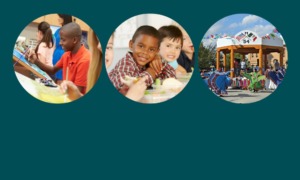 In the late 1990s, there was a dispiriting sense that many disadvantaged young people were too difficult to work with, that they were already “formed and shaped,” couldn’t change their “bad habits” and that nothing worked to reach them and change their life course.
In the late 1990s, there was a dispiriting sense that many disadvantaged young people were too difficult to work with, that they were already “formed and shaped,” couldn’t change their “bad habits” and that nothing worked to reach them and change their life course.
Recall that this was long before any of the research on adolescent brain development. This was also the time of the “super-predator” label that characterized many young people as extremely dangerous — too dangerous to participate in programs and services. As youth advocates, we were despondent that policymakers and practitioners held these ideas. While there was some research available about effective education and youth employment practices and programs, many policymakers and practitioners were unaware of it and didn’t act upon it.
When Congress reauthorized the Job Training Partnership Act in 1997 (which became the Workforce Investment Act), they noted in the Conference Report that:
Past research has shown that most youth will not emerge from a short-term, 3- to 6-month education or employment training program well-equipped to find stable, long-term places in the labor market. On the contrary, the network of supports and handholds that young people need to make their way needs to be rich and multipathed, not quick and cheap.
Clearly, there was a knowledge base of what worked to help youth at that time. Over the years, incremental changes have been made to improve the quality and quantity of services provided to at-risk and disadvantaged youth, but research has been slow to influence many programs. As a result, in the past 20 years, the interventions that have been provided have not always been research-based or linked to best practice. And the U.S. still has approximately 5.8 million youth who are neither connected to school or to work and who face dismal futures because of poor education and skill levels, lack of social, health, housing and financial supports, or involvement in the court or child welfare systems.
Today, however, we are fortunate to have access to much more rigorous research about effective youth programs. In particular, randomized controlled trials (RCT) of Youth Villages’ YV LifeSet program and of the Latin American Youth Center (LAYC) Promotor Pathway© program, both released this year, are a rich resource for youth advocates, policymakers and practitioners.
The YV LifeSet program provides supports to former foster youth to help them make a successful transition to independent living. A YV LifeSet specialist helps young people develop and achieve their own goals for the future and helps them secure housing, pursue education and employment, access health and mental health services, learn independent living skills such as budgeting, cooking, cleaning and shopping, and create and maintain healthy relationships with family and others. Specialists have small caseloads and serve six to 10 youth. They have frequent face-to-face meetings, weekly calls and specialists are available 24/7. The program provides intensive, individualized and clinically focused case management, support and counseling for a nine-month period.
[Related: Keeping Schools Safe While Reducing Suspensions and Expulsions]
The randomized controlled trial of YV LifeSet was the largest trial ever done on foster youth and showed statistically significant positive impacts. Young people who participated in the program had higher earnings and employment levels, increased housing stability and economic well-being, and had improved mental health. The program was found to be equally effective across different subgroups of youth with and without histories of juvenile justice custody.
The LAYC Promotor Pathway©, initiated in 2008, is an intensive client management program aimed at helping the highest-risk and most disconnected youth overcome significant life obstacles, such as lack of education, homelessness, trauma, substance abuse and court involvement. The program rests on the theory that a long-term, positive relationship with a caring adult (the Promotor) is the most important factor in helping youth reach their goals. The Promotor provides intensive case management, mentorship and advocacy for up to two years and helps connect the youth to other services.
The RCT of the Promotor Pathway© assessed whether the intervention improved outcomes for youth in the areas of education attainment, employment, reduced births, residential stability and reduced risk-taking behaviors at 18 months. The evaluation showed that participation in the program increased school engagement, reduced child births and increased housing stability.
What’s interesting to me is that the characteristics of effective programs that were mentioned in the 1997 Conference Report are similar to the ones that appear in the YV LifeSet and Promotor Pathway programs. First, the Conference Report says programs should be rich, not quick and cheap. The YV LifeSet and Promotor Pathway programs both have a longer duration and dosage than the average program and provide multiple services to youth. They focus more intensely on helping young people address their challenges in more comprehensive ways. They are most definitely not quick and cheap.
Second, the Conference Report says that the network of supports should be multipathed, which implies that services should be varied and provide options for young people based on their interests and needs. Both these programs are very individualized, and the adult mentor helps connect youth to a comprehensive array of services, whether it be housing, transportation, health care, education or job search assistance, based on their needs and goals.
Third, and perhaps most importantly, the Conference Report talks about handholds, which I interpret to mean the adult (mentor, coach, YV Specialist, or Promotor) who is there to help the young person address his or her challenges and find solutions. The evaluations of the YV LifeSet and Promotor programs made clear how important it is for youth to have a sustained relationship with a competent, caring adult — having a hand to hold.
The lessons from these studies are not so different from what we knew 20 years ago, but the rigorous nature of the evaluations should help convince policymakers in particular that we do know what works to help disadvantaged youth thrive. Let’s not wait another 20 years before acting.
Betsy Brand is the executive director of the American Youth Policy Forum, a nonpartisan organization dedicated to informing policymakers and practitioners about what works to help at-risk and disadvantaged youth thrive.
More related articles:
The Importance of Confidentiality for Effective SBIRT Interventions for Teens
Time to End State-sanctioned Assaults on Our Schoolchildren
Teen Stress and the Growing Brain































